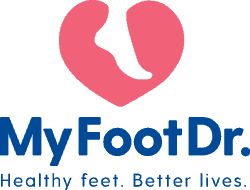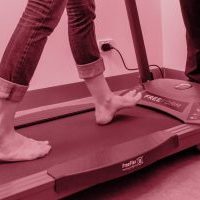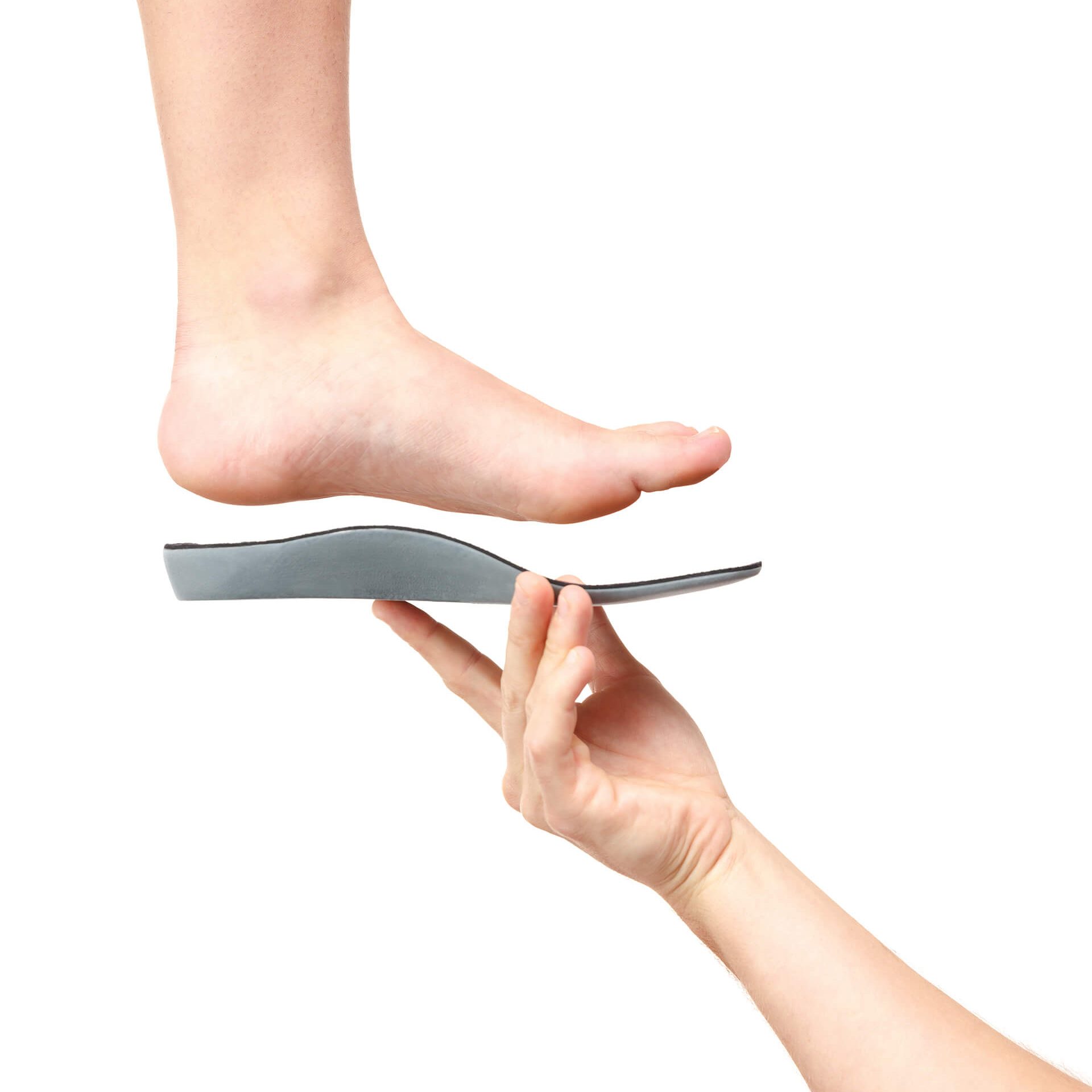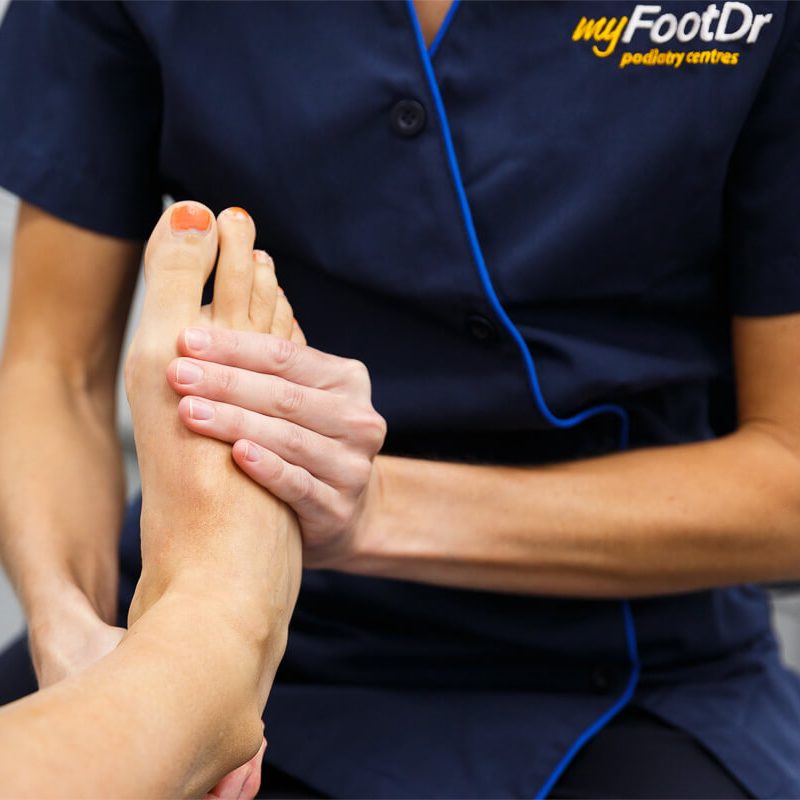Children’s Foot Check
Children’s feet and legs develop rapidly, and there are a surprising number of common foot problems that can be difficult for parents to identify.
What are the biggest problems with little foot?
Children can experience everything from delayed walking, tippy-toeing, flat feet and bowed legs, pigeon toeing and clumsiness, ingrown toenails, plantar warts and more. It is important for parents to understand how to properly care for growing feet. This includes who to turn to for professional advice and how to prevent these conditions from developing into life-limiting issues.
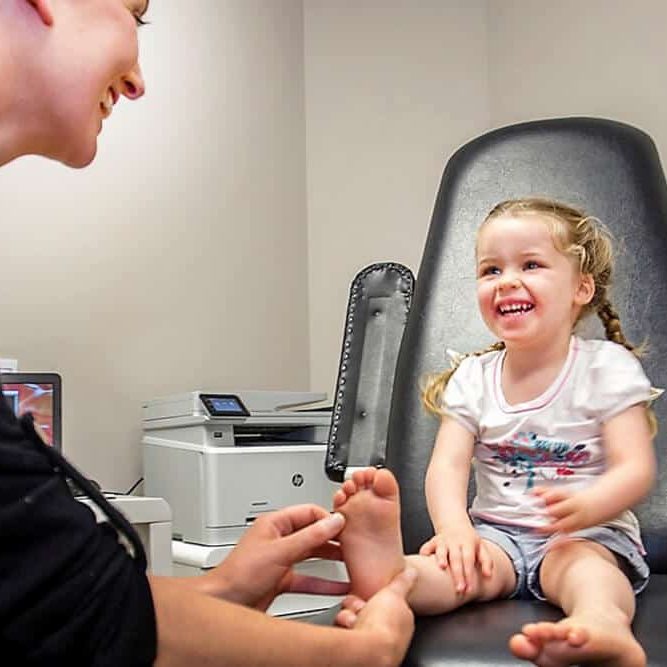
How to identify common problems with children’s feet:
Walking
One of the most important milestones in your child’s life is their first steps. All children develop at their own pace and will all commence walking at different ages. Most children will take their first steps between nine and twelve months. For some children, this may take a little longer. If at 15-16 months your child is not yet walking, it is recommended they are assessed.
When your child begins to walk, they will generally hold their arms high and their feet out wide for balance. As their balance improves, their feet should gradually close in and their arms should drop to their side. Children may develop abnormal walking patterns such as in-toeing (pigeon toed) or out-toeing and in some cases, tip-toe walking. If you begin to notice an abnormal pattern, have your child’s feet assessed by a podiatrist. Many adult foot and lower limb issues begin in childhood and are therefore more easily managed if they are addressed sooner rather than later.
Children’s Footwear
When children first begin to walk, for most children it is recommended that they are kept barefoot for the first 6-8 weeks. This allows for their important sensory system which aids in balance and movement coordination to develop. Shoes, however, should be worn for protection of the feet when outside the home.
Fitted Properly
- Too short/narrow – causes abnormal pressures to the bones in the feet
- Too long/broad – causes clawing of the toes to grip the shoe and may cause tripping
Adjustable (Laces/Velcro/Buckle)
- Semanage s the shoe to the foot so the toes do not claw to grip the shoe
- Allows you to adjust the shoe when your child grows
Firm Heel Counter
- You should not be able to squeeze the sides of the back of the shoe together
- Aids in supporting their feet
- Sandals should preferably have an enclosed back
Bend at the Ball of the Foot
- The foot bends just before the toes to push off the ground so the shoe should be flexible across this section
- The shoe should have a “shank” which means you should not be able to bend the shoe anywhere else
Straight last
- Turn the shoe over and check the shape of the sole
- If the shoe has a marked “C” shape then this is a curved last
- Most shoes will have a very slight curve but the rule is the straighter the better
Lightweight
- The heavier the shoe the harder their little feet and legs have to work
There is no one brand whereby all their shoes will have these characteristics. Also, expensive shoes aren’t necessarily any healthier for your child’s feet. Therefore it is important to assess each individual shoe on these merits. At My FootDr, we have a selection of footwear to protect the growing feet of your little ones.
Remember to check the size of their socks for appropriate fit regularly. Children’s socks tend to be forgotten about however wearing socks which are too small can apply excess pressure to the toes and may cause them to claw.
Flat Feet
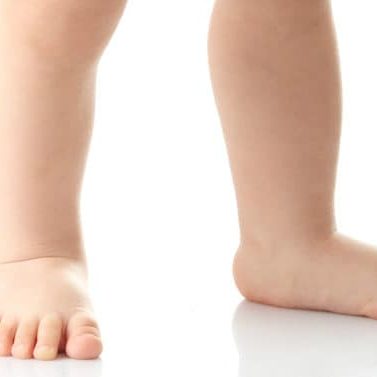
Very young children appear to have less of a visible arch due to the fatty pad underneath their feet. As they grow, their arch should appear more obvious.
The term flat feet is used to describe the condition where more of the arch comes in contact with the ground that is considered normal. It may also be termed…
- Fallen arches
- Pronation
- Rolled in feet
- Pes planus
Not all flat feet are considered abnormal and pain is not the only indicator that their flat feet are problematic. Particularly with young children, their perception of pain is very different to that of adults. Things to look out for are…
Change in Arch Height
Sometimes feet will appear to have an arch when they are non-weight-bearing and then appear to lose some or all of the arch height when standing. This is called functional flat feet.
This flattening of the arch and change in arch height can damage the soft tissue structures (such as muscles, ligaments and tendons) and allow the bones of the feet to move in directions that they are not designed to do.
Rolled-in Ankles
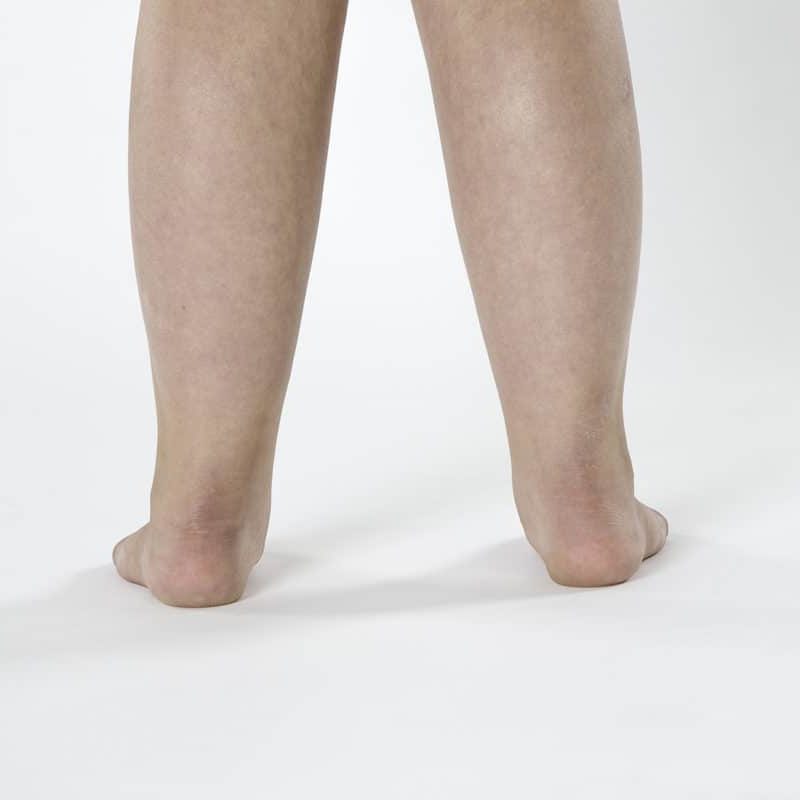
Your child’s ankles appear to tip in towards each other when looking from behind. This is called rearfoot pronation.
Other signs that there may be issues with your child’s feet or walking pattern are…
- They complain of tired legs
- They ask to be carried or pushed in the stroller
- Reluctant to walk
- They appear clumsy or uncoordinated
- Unwilling to participate in sport
- Unusual wear pattern on their shoes
- Morning stiffness
Contrary to popular belief, children do not “grow out of” having flat feet. In fact, some flat feet, if not managed in childhood can develop into pathological, often painful, flat feet in adults. This is why if you have concerns with your child’s feet, legs or walking pattern, to have them assessed and manageed earlier rather than later.
Remember their little feet have to walk them through life.
